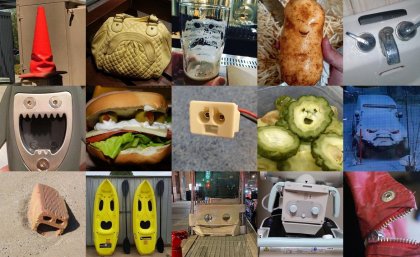
Just pay attention!
Some people see faces all around them. Think of a grumpy face in a tree trunk or a cheerful-looking sandwich during breakfast. Seeing faces in everyday objects is a well-known phenomenon known as ‘pareidolia’. But researchers are now making a surprising discovery. Because there appears to be a remarkable gender preference.
Pareidolia is a psychological phenomenon in which faces are recognized in everyday objects. That’s because the human brain has a strong tendency to make something recognizable out of everything. This is useful when recognizing shapes that may indicate danger, such as the silhouette of a predator. But sometimes our brain goes a little too fast and sees connections or patterns that aren’t there. For example, some people see all kinds of animals in clouds or, for example, a face in the moon.
In a new study 3800 participants were shown numerous images of inanimate objects. On some objects faces were recognizable, on others not. The subjects then had to say whether they thought the objects had a clear emotional expression, age, or gender.
Social Signals
It’s an interesting study. Because the illusion of seeing a face in an everyday object tells us a lot about how our brains detect and recognize social signals. “The aim of the study was to understand whether examples of pareidolia include certain social cues that faces normally radiate,” said study researcher Jessica Taubert. “Think about expression and gender.”
More men than women
It leads to a striking discovery. Because the subjects were not only able to recognize emotional expressions in the objects, they also attributed a specific age and gender to them. And most people who recognized faces in objects saw mostly male faces. “Our results showed a striking bias in gender perception,” Taubert says. “Most objects were considered male rather than female.”

Examples of pareidolia. Image: Jessica Taubert
It is quite remarkable that most people recognized mainly male faces in the objects. “Inanimate objects have no gender at all,” Taubert says. When we get minimal information, we seem to associate what we see with men rather than women. “Apparently, the visual features were insufficient to recognize female faces in the objects,” Taubert said.
for the fool
In that respect, pareidolia remains a very interesting phenomenon. “We know that when we see faces in objects, this illusion is processed by parts of the human brain dedicated to processing real faces,” Taubert says. “So in theory pareidolia is fooling the brain.”
And some do take it very far. For example, an entomologist claimed to have discovered life on Mars a few years ago. He thought he recognized the contours of insects on various photos taken by several Mars rovers. Unfortunately, the chances are that the shapes the entomologist identified as insects are just a pile of rocks…
Source material:
“ Do you see faces in things?” – The University of Queensland
Image at the top of this article: Thomas Budach via Pixabay